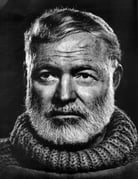 Is there anything you need to do, hold, or see before you sit down to write, every time you write? If so, you might already have some sort of writing ritual.
Is there anything you need to do, hold, or see before you sit down to write, every time you write? If so, you might already have some sort of writing ritual.
From renting a hotel room to chewing on coffee beans, the famous authors on this list had some unique writing rituals. Some of them are a bit more eccentric than others. But after you parse through them, you’ll see why you might want to consider starting a writing ritual too, if you don’t already have one.
James Joyce (author of Ulysses and Dubliners) liked to lie flat on his stomach in bed when writing. And since he was nearly blind while writing Finnegan’s Wake, he used large colored crayons or colored pencils and wrote with them on cardboard so he could see the words better. He also made sure to wear a white coat so that light would reflect off it onto whatever he was writing so that he could see it better. (Not sure how the white coat-and-light thing worked in bed, though.)
Maya Angelou checked into a hotel room in the wee hours of the morning (around five) when she wanted to get some work done, which is what she did while writing I Know Why the Caged Bird Sings. She requested all distracting décor be removed from the room. She also usually had a bottle of sherry, legal pads, playing cards, a Bible, and a thesaurus with her. But she never slept in the room. She always left the room to go home and make dinner, and edit some of the words she wrote earlier in the day.
Ernest Hemingway always started writing at dawn, and would stand at his desk while typing on a typewriter at his house in the Florida Keys. He didn’t like to sit down while he was writing. He would finish his daily writing by noon, walk down the street to his local bar near the beach, and be drunk by three. This was especially his favorite ritual while he was working on The Old Man and the Sea.
Honoré de Balzac liked to drink a lot of coffee…not just a cup or two but multiple cups, sometimes up to fifty in a day. He took it black, and would write all day and night, once working for over forty-eight hours straight. When the effects of coffee stopped working for him, he’d chew on raw coffee beans. He only took breaks for breakfast and dinner, and would bathe on some days. Due to the intense nature of this schedule, he could complete pieces of writing in just a couple of weeks or months. One of his most infamous works is La Comédie Humaine (The Human Comedy).
Virginia Woolf, author of Mrs. Dalloway, made her own stand-up desk that was recently donated to Duke University. It was a three-and-half-foot tall desk with an angled top that allowed her to look at her work up-close and from afar. Apparently, she started using this desk after a tiff with her sister, Vanessa Bell. The tiff started when Bell insinuated that it was more tiresome work to stand when writing (Woolf always sat at the time). Woolf still always wrote for at least two hours every morning on a regular basis, whether she was standing or not.
Truman Capote refused to begin or end something he was writing on a Friday and would avoid hotel rooms if they had the number “13” in them. He preferred lying on his sofa when working, and always had to be sipping on a drink or smoking a cigarette as he worked. He also never left only three cigarette butts in his ashtray while he was writing. Suffice it to say, the author of In Cold Blood was slightly superstitious.
Victor Hugo probably has one of the most notably unique writing rituals in history. The author of Les Misérables and The Hunchback of Notre Dame had a problem with procrastination. To ensure he got to work when he had a large project with a tight deadline, he would ask his valet to hide all his clothes so that he wouldn’t be able to get dressed and leave the house. That’s right, he would write in his birthday suit, completely nude, or in a shawl if he was chilly.
Why You Need a Writing Ritual Too
Having a writing ritual:
- Helps prevent writer’s block because you have a consistent routine
- Reaffirms your intentions to sit down and get some work done, consciously and subconsciously
- Cultivates your authentic self; your ritual is strictly for you, so it can be as weird as you need it to be
- Reduces stress; the ritual helps you start writing each time, and you’ll focus more on the act of writing itself and less on writing perfectly
- Creates discipline; a writing ritual is part of a work routine that’s similar to how athletes maintain a training regimen
If writing in the buff (like Hugo) isn’t for you, don’t worry, that’s not the only type of writing ritual available. Whether you choose a writing ritual mentioned above or something very different, the best part about choosing one is that it’s entirely up to you, and you pick what works for you so you get the most work done each day.
Do you already have a writing ritual? Please share with us below, and let us know how and why it helps you.




